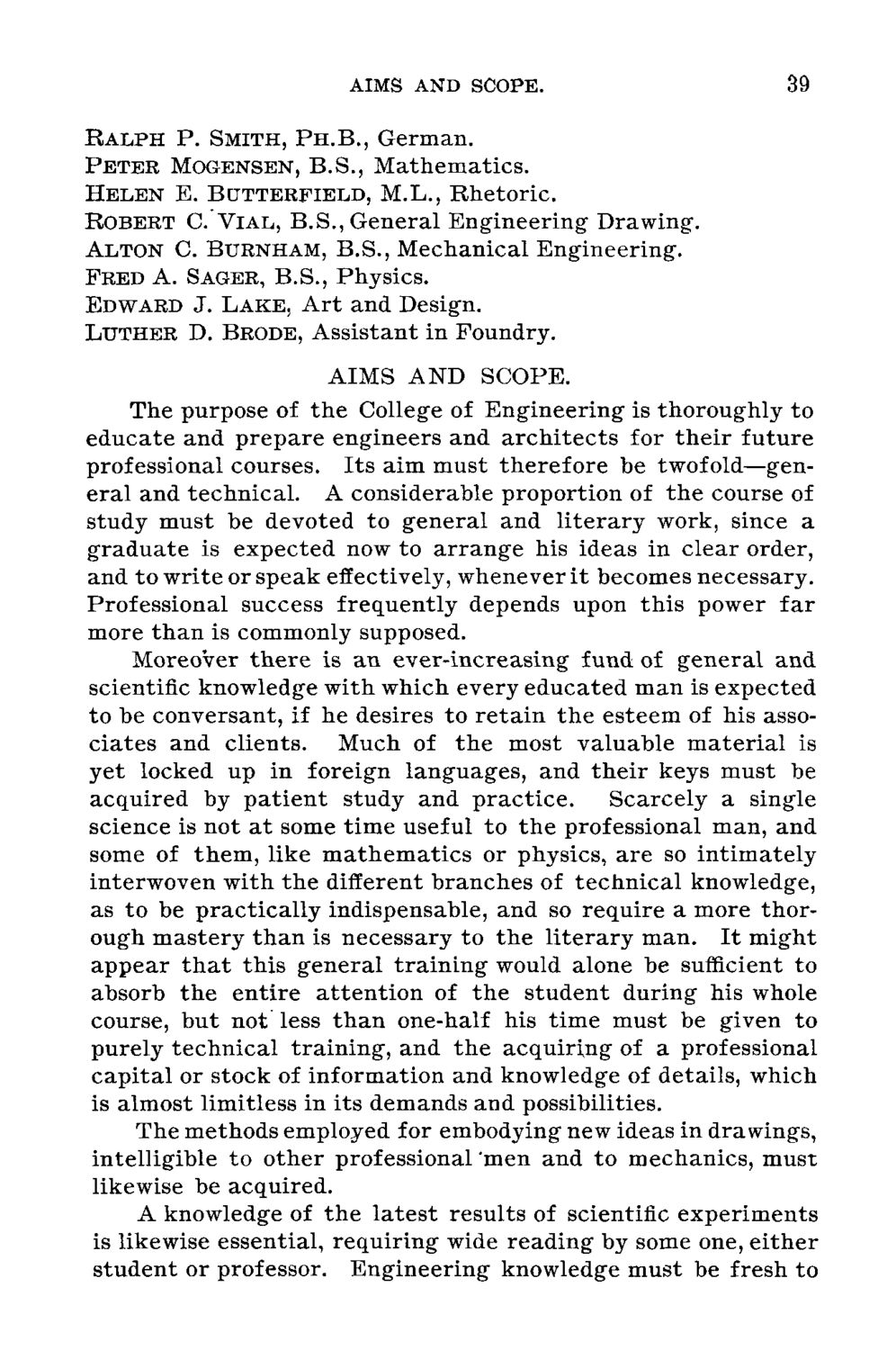| |
| |
Caption: Course Catalog - 1894-1895
This is a reduced-resolution page image for fast online browsing.

EXTRACTED TEXT FROM PAGE:
AIMS AND SCOPE. RALPH P. SMITH, PH.B., German. PETER MOGENSEN, B.S., Mathematics. 39 HELEN E. BUTTERFIELD, M.L., Rhetoric. ROBERT C. VIAL, B.S., General Engineering Drawing. ALTON C. BURNHAM, B.S., Mechanical Engineering. FRED A. SAGER, U.S., Physics. EDWARD J. LAKE. Art and Design. LUTHER D. BRODE, Assistant in Foundry. AIMS AND SCOPE. The purpose of the College of Engineering is thoroughly to educate and prepare engineers and architects for their future professional courses. Its aim must therefore be twofold—general and technical. A considerable proportion of the course of study must be devoted to general and literary work, since a graduate is expected now to arrange his ideas in clear order, and to write or speak effectively, whenever it becomes necessary. Professional success frequently depends upon this power far more than is commonly supposed. Moreover there is an ever-increasing fund of general and scientific knowledge with which every educated man is expected to be conversant, if he desires to retain the esteem of his associates and clients. Much of the most valuable material is yet locked up in foreign languages, and their keys must be acquired by patient study and practice. Scarcely a single science is not at some time useful to the professional man, and some of them, like mathematics or physics, are so intimately interwoven with the different branches of technical knowledge, as to be practically indispensable, and so require a more thorough mastery than is necessary to the literary man. It might appear that this general training would alone be sufficient to absorb the entire attention of the student during his whole course, but not less than one-half his time must be given to purely technical training, and the acquiring of a professional capital or stock of information and knowledge of details, which is almost limitless in its demands and possibilities. The methods employed for embodying new ideas in drawings, intelligible to other professional 'men and to mechanics, must likewise be acquired. A knowledge of the latest results of scientific experiments is likewise essential, requiring wide reading by some one, either student or professor. Engineering knowledge must be fresh to
| |